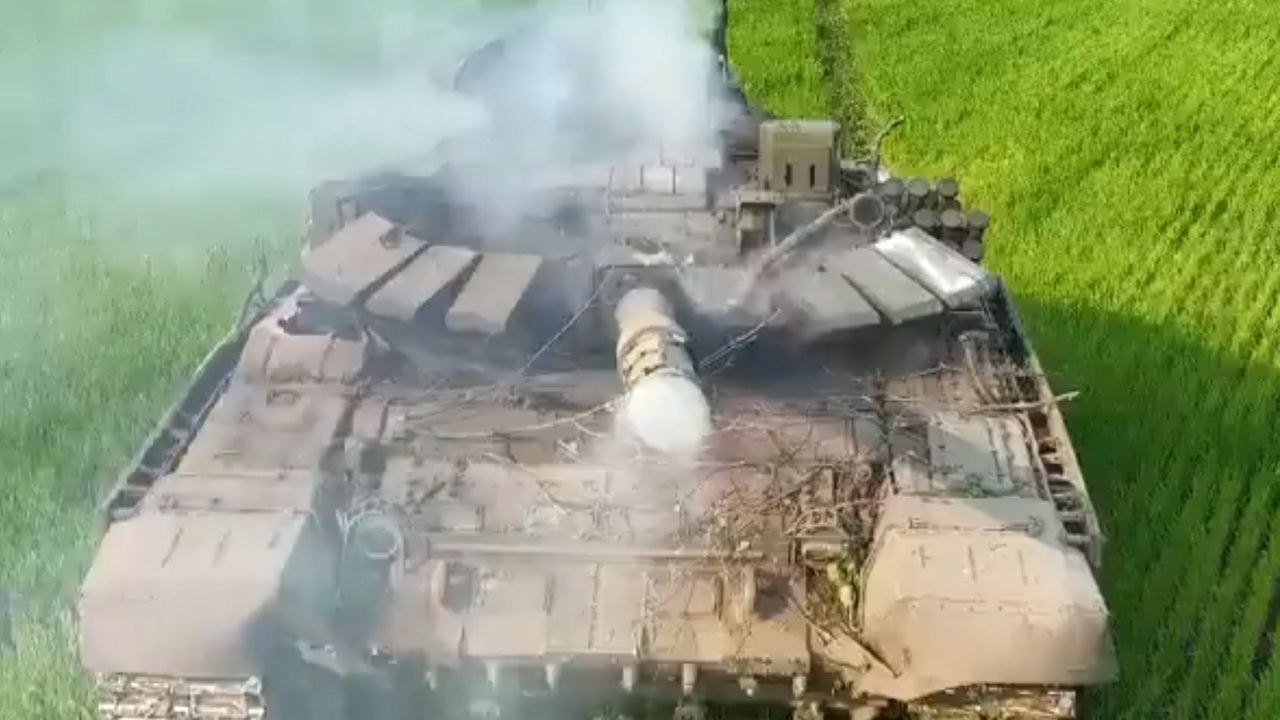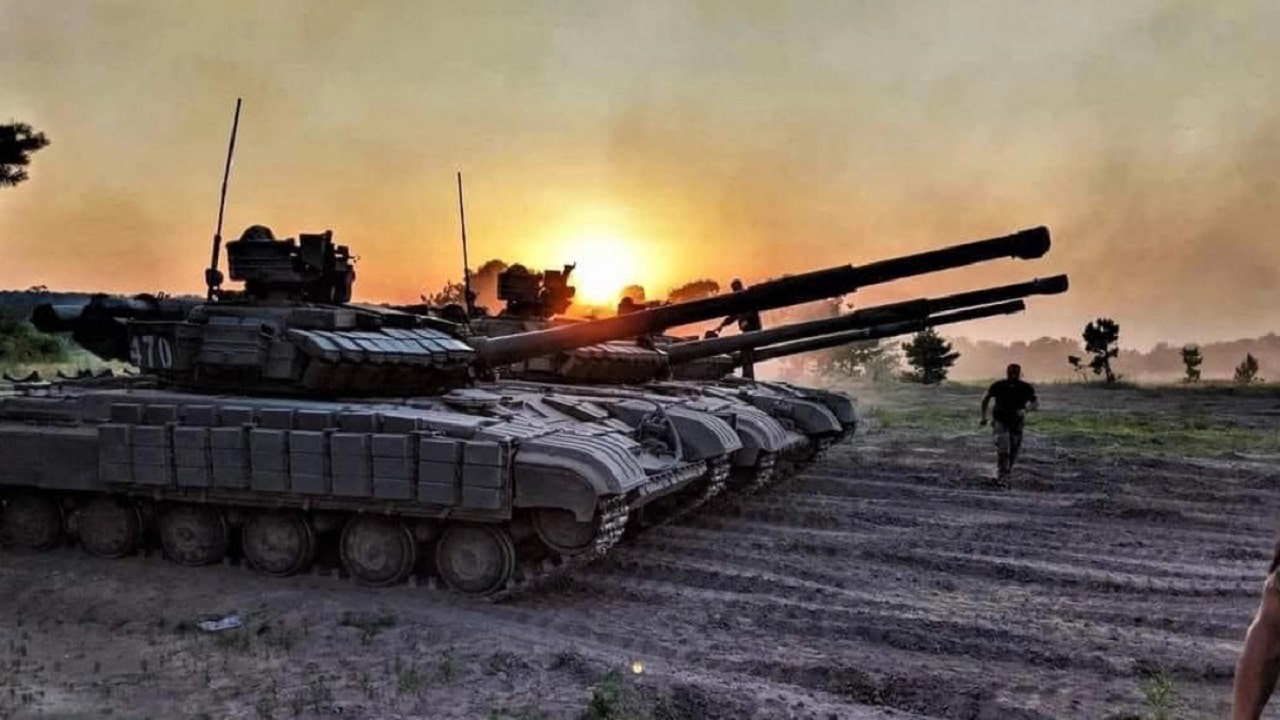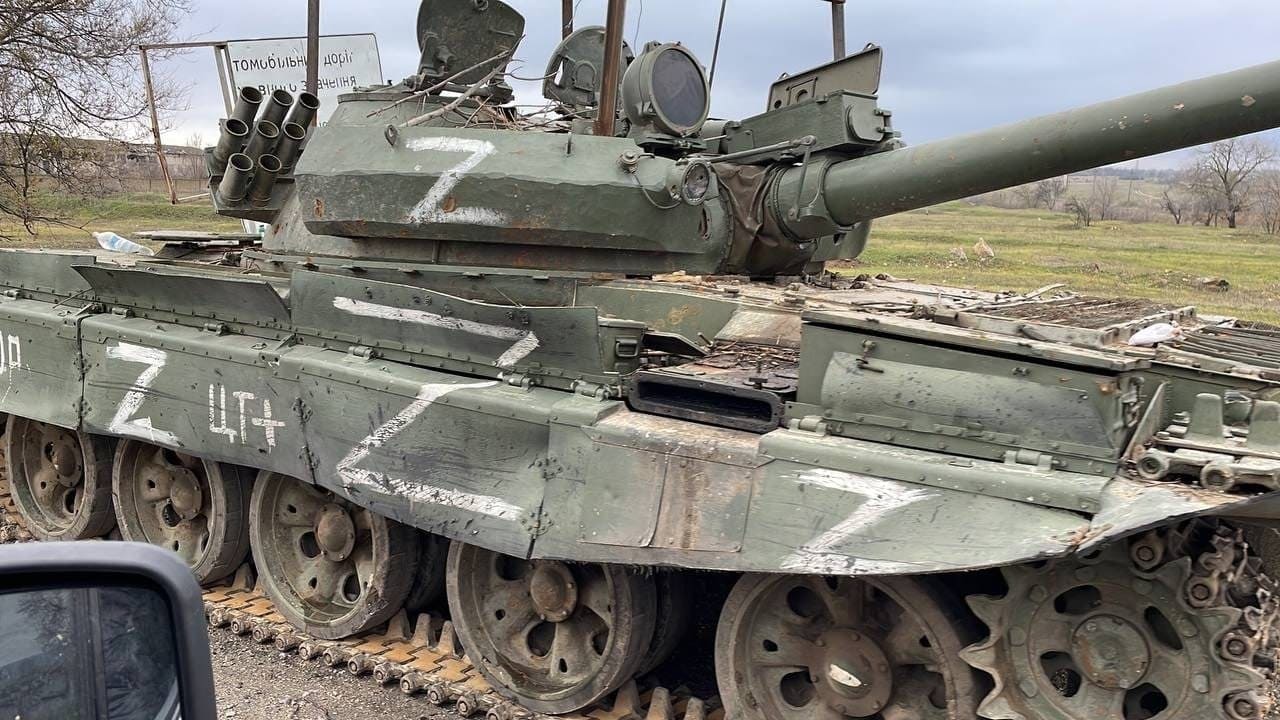Пытаются прикинуть, что дальше будет.
19FortyFive предстерегает: Ядерная война на Украине станет катастрофой для США
1945: Ядерная война на Украине станет катастрофой для США
К. Роберт Гринуэй и Роберт Питерс Опубликовано – 06.12.2024
Когда Россия нанесла удар по Украине с помощью БРСД «Орешник», способной нести ядерный заряд и оснащенной несколькими обычными разделяющимися головными частями, это был явный пример подачи сигнала со стороны Москвы.
И что это был за сигнал, который Москва дала? Что Владимир Путин впервые может быть готов применить ядерное оружие после недавнего снятия Белым домом ограничений на использование поставленных США на Украину ракет ATACMS .
Хотя мы в «Фонде культурного наследия» осуждаем этот удар по Украине, мы должны понимать серьезность ситуации.
Каждый раз, когда Вашингтон поставлял Украине новое оружие, Россия выдвигала новые ядерные угрозы Украине, членам НАТО и Соединенным Штатам. С осени 2022 года и лета 2023 года в Вашингтоне были реальные опасения, что Россия может фактически применить ядерное оружие на поле боя. Однако, так как этого не произошло, многие военные аналитики на Западе посчитали, что Владимир Путин становится как тот мальчик, который все время кричал «Волки!», и перестали реагировать на бесконечную серию ядерных угроз со стороны России.
После снятия Белым домом ограничений на поставляемые Америкой ракеты ATACMS Украина запустила ATACMS по целям на территории самой России . Почти сразу же Москва начала выдавать новый раунд ядерных угроз, но они качественно отличались от всего, что было до этого.
.
В течение нескольких дней Россия опубликовала обновленную доктрину применения ядерного оружия, в которой говорилось, что Москва будет рассматривать нападение на Россию со стороны неядерной державы с « участием или поддержкой ядерной державы » как «совместное нападение на Российскую Федерацию».
В новой ядерной доктрине также отмечалось, что Россия будет рассматривать агрессию против России со стороны члена военного альянса как «агрессию всего блока», явная ссылка на НАТО. В ней также утверждалось, что Россия может применить ядерное оружие в ответ на массированную воздушную атаку баллистических и крылатых ракет, самолетов или беспилотников.
После публикации новой доктрины применения ядерного оружия, министр иностранных дел России Сергей Лавров публично заявил, что Россия не хочет войны с Западом или применения ядерного оружия в боевых действиях, но Вашингтон своими действиями делает такой исход более вероятным.
Изменился и характер российской атаки на Украину с использованием баллистической ракеты средней дальности, способной нести ядерный заряд. Хотя неясно, что это была за конкретная ракета, многие предполагают, что это был вариант РС-26, российской баллистической ракеты средней и межконтинентальной дальности, предназначенной для доставки нескольких независимых ядерных боеголовок к цели.
Чтобы осуществить такую атаку, России, возможно, пришлось снять ядерные боеголовки с ракеты, заменив их обычными боеголовками, а затем запустить - это первый раз, когда такое произошло.
Даже в худшие дни Холодной войны Соединенные Штаты и Советский Союз не наносили удары по союзникам или партнерам друг друга обычными боеголовками, установленными на баллистических ракетах, способных нести ядерные заряды, в рамках сигнальной кампании.
ВАЖНО:
Удар точно имитировал ядерную атаку:
- ракета была запущена с большого расстояния,
- следовала по баллистической траектории,
- обрушила на предполагаемую цель несколько боеголовок .
Во времена холодной войны в Белом доме и Пентагоне были высококвалифицированные стратеги, которые понимали такие сообщения и сигналы с первого раза. Спустя 33 года после распада Советского Союза далеко не ясно, есть ли такой персонал теперь на самых высоких уровнях правительства, чтобы хотя бы понимать посылаемое сообщение.
Хотя такая атака может быть очередным блефом и Москва отдала приказ об атаке в качестве сигнала Вашингтону. О том, что США зашла слишком далеко в поддержке Украины и что удары по российской территории с использованием американского оружия неприемлемы. И что в следующий раз баллистическая ракета может быть оснащена чем-то иным, нежели обычные боеголовки.
.
Действительно, разумно предположить, что Москва пытается очень четко, прямо и открыто подать сигнал о том, что Соединенные Штаты перешли красную черту и что теперь Москва приближается к точке, за которой она применит ядерное оружие на поле боя в Украине.
ВАЖНО:
Даже если это очередной блеф, Вашингтон должен как минимум учесть, что на этот раз Россия серьезно настроена на применение ядерного оружия на поле боя.
Снятие президентом Байденом ограничений на использование Украиной поставленных американцами ракет является излишне безрассудным.
Президент Байден, или вновь избранный президент Трамп — должны восстановить разумные ограничения на использование американского оружия и стремиться положить конец этой войне. Невыполнение этого требования налагает неприемлемый уровень риска на американский народ и американскую национальную безопасность — без какой-либо реальной выгоды для Соединенных Штатов.
Проще говоря, не в интересах Америки рисковать даже ограниченной ядерной войной с Россией из-за Украины.
.
ПРИМЕЧАНИЕ, Ред. (то есть от автора Новый читатель)
В свете «Орешника» выясняется, что Россия может и без ЯББ нанести неприемлемые удары подстрекателям войны:
На «Сармате» используются управляемые боевые блоки «Авангард» (Ю-71), которые способны лететь с гиперзвуковой скоростью, совершая при этом маневры, что дает почти стопроцентную защиту от противовоздушной и противоракетной обороны противника.
Ракеты могут быть применены в локальных конфликтах по стратегии глобального удара с поражением стратегических объектов кинетической энергией боевого блока, без использования ядерного взрыва. Если будет принято политическое решение, такие «Авангарды» могут быть использованы в возможном конфликте со странами НАТО, а также против Украины, уверен Сергей Оверченков.
The source of the translation above:
A Nuclear War in Ukraine Would Be a Disaster for America

ByRobert Greenway and Robert Peters Video screenshot of a Russian T-72B3 tank on fire and a second decapitated tank by Ukraine's 93rd Mechanized Brigade.
Video screenshot of a Russian T-72B3 tank on fire and a second decapitated tank by Ukraine's 93rd Mechanized Brigade.
When Russia struck Ukraine with a nuclear-capable intermediate range ballistic missile, armed with multiple conventional independent re-entry vehicles, it was a clear instance of signaling by Moscow.
And what was that message that Moscow? That Vladimir Putin may for the first time be ready to use nuclear weapons following the White House’s recent lifting of employment restrictions on U.S.-provided ATACMS missiles to Ukraine.
While we at the Heritage Foundation condemn this strike on Ukraine, we must understand the seriousness of the situation.
This November, the Biden Administration lifted range restrictions on the employment of U.S.-provided ATACMS to Ukraine. The Administration argued that this was done in response to the deployment of North Korean combat forces in Ukraine—but oddly, that it would not be a game changer on the battlefield. U.S. Secretary of Defense Lloyd Austin went so far as to say: “I don’t believe one capability is going to be decisive.”
Beginning with the February 2022 invasion of Ukraine, the Biden Administration, step by step, gave more weapons to Ukraine—to include artillery and small arms, tanks, armored personnel carriers, air and missile defenses, eventually to include longer and more accurate missiles. Throughout this period, the Biden Administration restricted the employment of American-provided weapons to only attacking Russian forces inside of Ukraine.
Each time Washington provided new weapons to Ukraine, Russia would issue new nuclear threats to Ukraine, NATO members—and the United States. Indeed, in the fall of 2022 and the summer of 2023, there were real concerns in Washington that Russia might actually use nuclear weapons on the battlefield. However, as time passed and this failed to materialize, many defense analysts in the West believed that Vladimir Putin was becoming the Boy Who Cried Wolf—and dismissed the seemingly never-ending series of nuclear threats.
Following the White House’s lifting of restrictions on the American-supplied ATACMS missiles, Ukraine launched ATACMS at targets inside of Russia itself. Almost immediately, Moscow began to issue a new round of nuclear threats—but these were qualitatively different from all that came before.
Within days, Russia released an updated nuclear employment doctrine which stated that Moscow would view an attack against Russia by a non-nuclear power with the “participation or support of a nuclear power” as a “joint attack on the Russian Federation.” The new nuclear doctrine also noted that Russia would view aggression against Russia by a member of a military alliance as “an aggression by the entire bloc,” a clear reference to NATO. It also asserted that Russia could use nuclear weapons in response to a massive air attack of ballistic and cruise missiles, aircraft, or drones.
Following the release of the new nuclear employment doctrine, Russian Foreign Minister Sergey Lavrov stated publicly that Russia did not want a war with the West or see nuclear weapons employed in combat, but that Washington was making such an outcome more likely through its actions.
What has changed is the nature of the Russian attack on Ukraine with a nuclear-capable intermediate range ballistic missile. While it is unclear what the specific missile was, many suggest that it was a variant of an RS-26, a Russian intermediate to intercontinental range ballistic missile designed to put multiple independent nuclear reentry vehicles onto a target.
To carry out such an attack, Russia may have had to remove nuclear warheads from the missile, replace them with multiple independent conventional warheads, and then launch—almost certainly, the first time such a thing has happened. Even during the worst days of the Cold War, the United States and the Soviet Union did not strike each other’s allies or partners with conventional warheads carried by nuclear-capable ballistic missiles as part of a signaling campaign.
Image from Ukraine Government – handout.
Given that the attack fortunately had limited operational effect—it did accurately simulate a nuclear strike in the way it was launched from long-distance, followed a ballistic trajectory, and then showered its intended target with multiple independent warheads. In the Cold War, the White House and the Pentagon would have been staffed with defense strategists who understood such messages and signaling. Thirty-three years after the dissolution of the Soviet Union, it is far from clear if such strategists are resident at the highest levels of government to even understand the message being sent.
While such an attack could of course be yet another bluff, it is plausible that Moscow ordered the attack as a signal to Washington that it has gone too far in supporting Ukraine and that strikes on Russian soil with American made weapons are unacceptable—and that the next time, a ballistic missile might be armed with something other than conventional warheads.
Indeed, it is reasonable to assume that Moscow is trying to signal very clearly, directly, and openly that the United States has crossed a redline and that Moscow is now approaching the point where it will employ nuclear weapons on the battlefield in Ukraine.
Moscow may still be crying wolf. But in the children’s tale, the very act of repeatedly crying wolf meant that no one knew when the cry was true. Given that Russia has roughly 10 times as many operationally deployed tactical nuclear weapons as the United States does, Washington must at a minimum consider that this time, Russia is serious about employing nuclear weapons on the battlefield.
Old Russian T-62 Tank Fighting in Ukraine. Image Credit: Twitter.
While the Heritage Foundation has and continues to wish Ukraine success in its fight for independence from Russia, President Biden’s lifting of restrictions on Ukrainian employment of American-supplied missiles is needlessly reckless. President Biden—or failing that, President-elect Trump—should reimpose sensible restrictions on the employment of U.S. weapons and seek an end to this war. Failure to do so imposes unacceptable levels of risk on the American people and American national security—with no real benefit to the United States.
Put simply, it is not in American interests to risk even a limited nuclear war with Russia over Ukraine.
About the Authors:
Robert Greenway is the Director of the Allison Center for National Defense at The Heritage Foundation where he is responsible for the development of policies which promote a strong national defense safeguarding American freedom and prosperity. He previously served as President and Executive Director of the Abraham Accords Peace Institute which advocates for strengthening and expanding the historic agreements he helped forge. Rob has more than 30 years experience in public service culminating as the senior U.S. government official responsible for developing, coordinating and implementing U.S. government policy for all of the Middle East and North Africa on the National Security Council. Prior to service on the NSC he served as a Senior Intelligence Officer at the Defense Intelligence Agency, and a combat veteran of the United States Army Special Forces.
Robert Peters is a Research Fellow for Nuclear Deterrence and Missile Defense in The Heritage Foundation’s Allison Center for National Security. Prior to joining Heritage, Peters served as the lead strategist at the Defense Threat Reduction Agency, where he oversaw the office that developed the Agency’s five-year strategy, conducted the Agency’s research and tabletop exercise program, and executed Agency-level program evaluations. Leading a team of forty-two people, Peters revamped the research function within the Agency and oversaw the Department of Defense’s Track 1.5 and Track 2 strategic dialogues with allies and partners.
In this article:Defense, featured, Military, Putin, Russia, Ukraine, War in Ukraine
Written ByRobert Greenway and Robert Peters
Robert Greenway is the Director of the Allison Center for National Defense at The Heritage Foundation where he is responsible for the development of policies which promote a strong national defense safeguarding American freedom and prosperity. He previously served as President and Executive Director of the Abraham Accords Peace Institute which advocates for strengthening and expanding the historic agreements he helped forge. Rob has more than 30 years experience in public service culminating as the senior U.S. government official responsible for developing, coordinating and implementing U.S. government policy for all of the Middle East and North Africa on the National Security Council. Prior to service on the NSC he served as a Senior Intelligence Officer at the Defense Intelligence Agency, and a combat veteran of the United States Army Special Forces. Robert Peters is a Research Fellow for Nuclear Deterrence and Missile Defense in The Heritage Foundation’s Allison Center for National Security. Prior to joining Heritage, Peters served as the lead strategist at the Defense Threat Reduction Agency, where he oversaw the office that developed the Agency’s five-year strategy, conducted the Agency’s research and tabletop exercise program, and executed Agency-level program evaluations. Leading a team of forty-two people, Peters revamped the research function within the Agency and oversaw the Department of Defense’s Track 1.5 and Track 2 strategic dialogues with allies and partners.
I should state that using even non-nuclear Oreshniks will be a disaster for America.
No comments:
Post a Comment